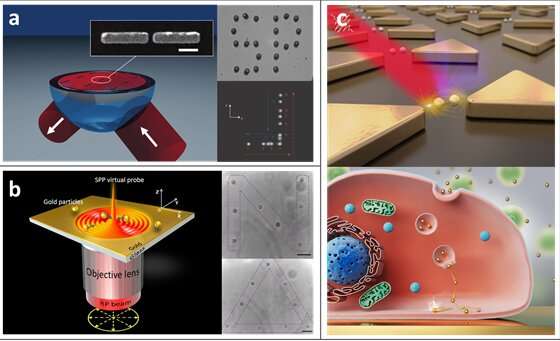Optical tweezers and associated manipulation tools in
the far field have had a major impact on scientific and engineering
research by offering precise manipulation of small objects. More
recently, near-field manipulation with surface plasmons has opened
opportunities not feasible with conventional far-field optical
methods. The use of surface plasmon techniques enables excitation
of hotspots much smaller than the free-space wavelength; with this
confinement, the plasmonic field facilitates trapping of various
nanostructures and materials with higher precision. It has become
commonly used in trapping of micro- and nanometer-sized objects in
various fields of science.



